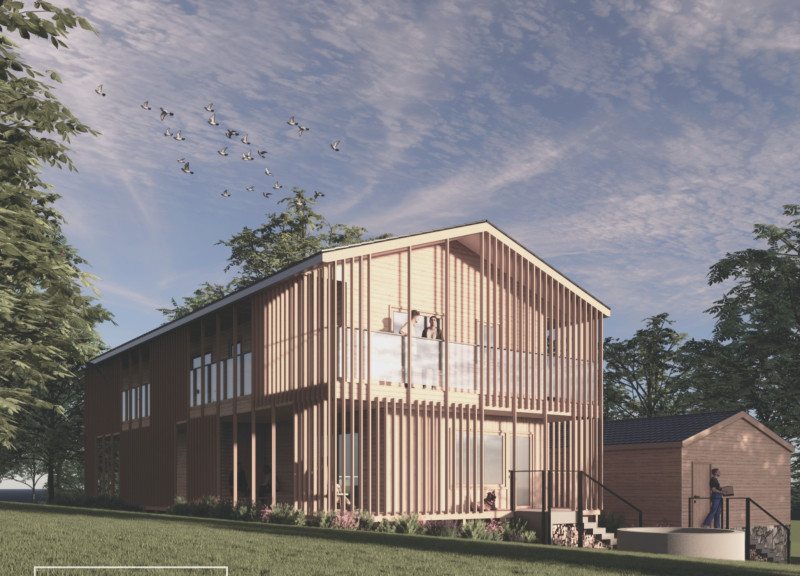5 key facts about this project
This architectural design emphasizes sustainability and the effective use of materials, particularly cross-laminated timber, which is prominent throughout the structure. This choice not only aligns with sustainable building practices but also brings a warm, organic quality to the home's interiors. The use of concrete for the foundations demonstrates a pragmatic approach to construction, ensuring stability while minimally disrupting the natural terrain. Large glazing panels are incorporated strategically to enhance natural light within the living areas, creating a bright and airy atmosphere that is vital for artistic endeavors.
The layout of the Painters' Lake House is carefully considered to support both communal living and privacy. An open-plan living area serves as the heart of the home, encouraging interaction among family members, while separate zones allow for personal retreats and focused creative work. The design also includes a dedicated art studio with ample natural light, designed to cater to various artistic activities, making it a vital aspect of the overall architectural vision. Outdoor spaces further complement the design, offering terraces and patios that extend the living experience into the natural surroundings, allowing occupants to immerse themselves in the landscape and engage in outdoor artistic expression.
What makes this project particularly unique is its ability to balance modern architectural language with local cultural heritage. The use of timber and traditional structural forms references Latvian architectural styles while incorporating contemporary design principles. This interplay between the old and the new creates a sense of continuity with the past while addressing the needs of modern living. The thoughtful design invites occupants to connect with their environment, fostering a lifestyle that values both creativity and community.
In summary, the Painters' Lake House stands as a testament to how architecture can harmonize with nature and facilitate artistic expression. The careful selection of materials and the well-conceived spatial organization reflect a commitment to both sustainability and usability. This project is a noteworthy exploration of how residential architecture can serve multifaceted purposes, enhancing the lives of its inhabitants while respecting the surrounding landscape. For more details, readers are encouraged to explore the architectural plans, sections, designs, and ideas presented in relation to this project.


























